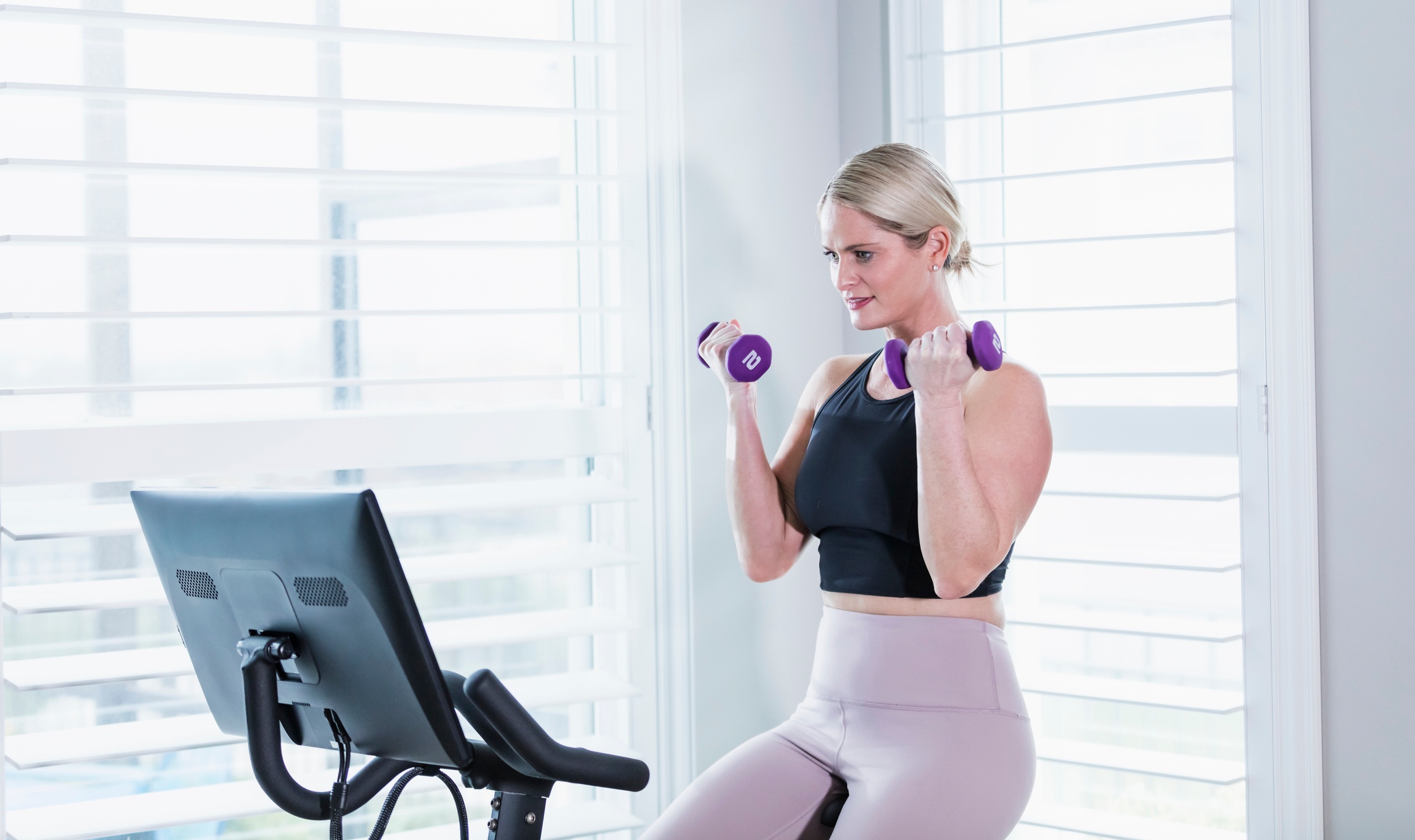
If you’ve been contemplating picking up some new health and fitness equipment, this guide should help you to understand the key factors to consider regarding equipment like treadmills, ellipticals, stationary bikes, rowers, and home gyms.
Table of Contents:
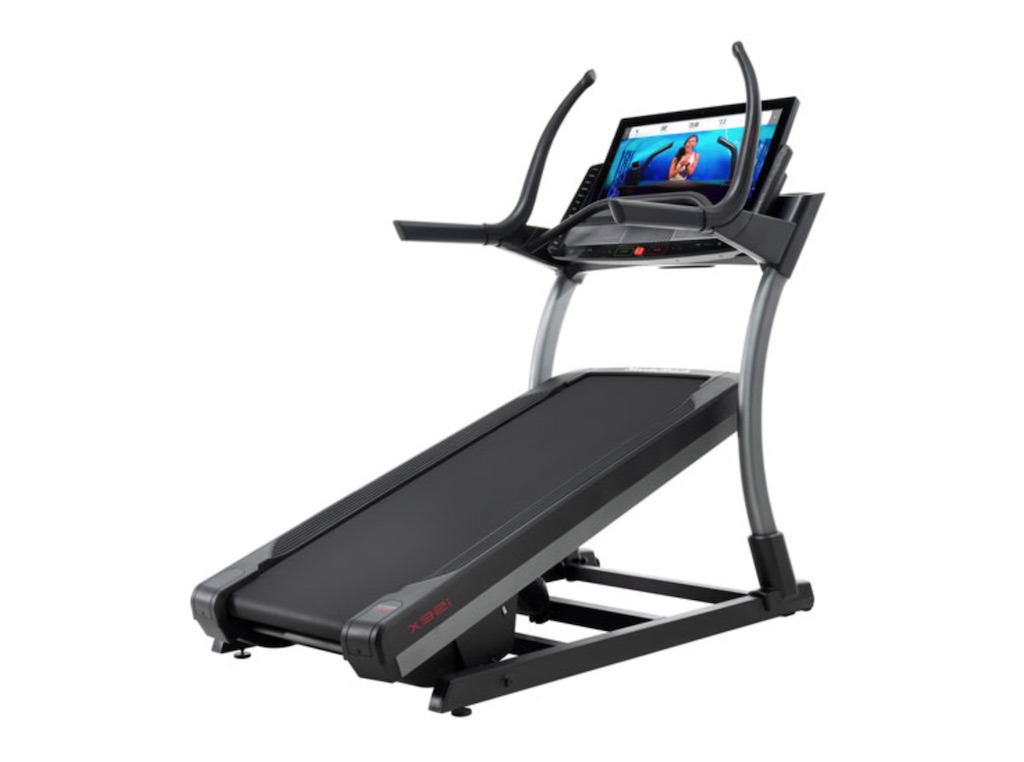
Treadmills
When shopping for a treadmill, it’s important to know what minimum features you’ll need. Each model may have different minimum standards, so use the following list to help you evaluate each component of the treadmill individually:
Speed: Another important consideration is the speed of your treadmill. Most units offer running speeds from 0 to 10 mph, which is probably a suitable range for the average user. If you’re a serious runner with a need for speed, you’ll likely want to look for a treadmill with a greater than 10 mph maximum. Some units do go as high as 12 mph, but these models are specifically designed for more serious joggers and runners, so knowing yourself and your running goals is a key factor in making this decision. Additionally, it’s always good to look for treadmills with quick and easy to use speed adjustments. For instance, some models feature one-touch speed buttons that are quick and easy to adjust even in the middle of your run. This is certainly a very nice feature to have!
Incline: The typical incline range for treadmills falls somewhere between 0 and 12%. This is very easily adjustable on most models. In the best case scenario, it’s done by the simple touch of a button. However, some more basic models have a manual adjustment that requires the user to get off the treadmill to complete. Also, note that Best Buy has Incline Trainers that offer an incline of up to 40% to -6%.
Control panels (consoles): Most treadmills offer some level of control and feedback that’s clearly displayed on a screen in the front. This information centre is called the treadmill’s console, but the amount of information displayed on it can vary greatly by model. Look for a treadmill that at least covers the basics: speed, running time, and distance travelled generally come standard on most modern treadmills. But you can also find models with information such as heart rate, calories burned, incline, or even workout history. It’s important to identify the information that matters most to you before you buy and try to select a model that covers all your key bases. Many models today even offer preset or custom programs that you can design yourself, so be sure to familiarize yourself with what’s out there.
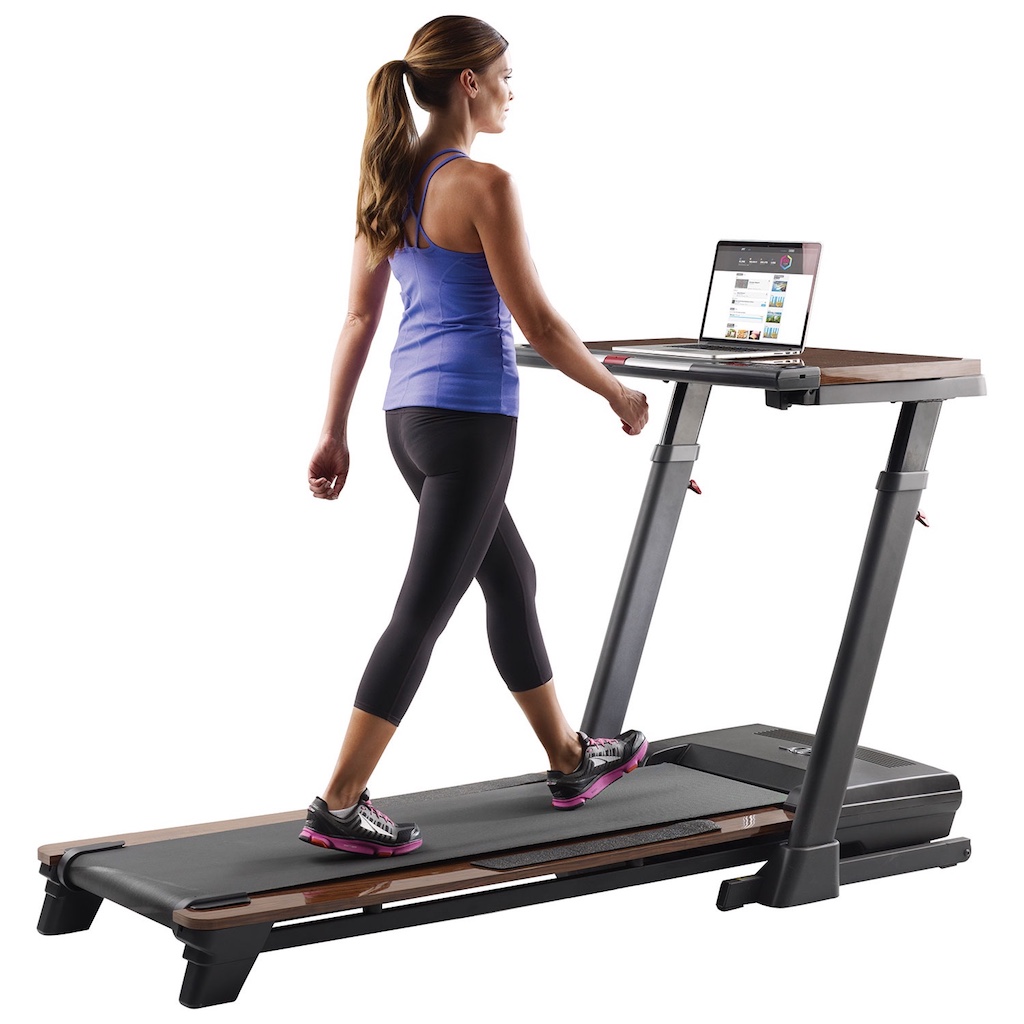
Motor: Any treadmill’s motor is one of its most important features. You’ll want to find a treadmill with a motor offering an effective continuous-duty rating. This rating indicates the motor’s true continuous horsepower, which must be distinguished from the motor’s peak horsepower. If the motor is not rated continuous-duty, then the horsepower rating given is only its peak horsepower (the highest power output it can produce under ideal conditions) and therefore not its true effective horsepower. Thus, a continuous-duty motor offering 2.0 horsepower of output is actually more powerful than a 2.0 horsepower motor that hasn’t received the continuous duty label. Always look for a motor with a good continuous-duty rating (a minimum 1.5 continuous-duty HP rating is recommended). This will ensure a consistent workout of maximum quality every time you step on the machine.
Frame: Always know how much space you have available for a prospective piece of workout equipment. Measure your workout area before you order your unit, and then double and triple measure to make sure it’s going to fit. Consider every dimension when taking your measurements, and do keep in mind that many (but not all) treadmill units fold away for convenient storage (i.e., folding treadmills have a deck that pivots upwards and locks into place for easy and less conspicuous storage when not in use). If you wish to work while you walk, there are also desk treadmills now that have a dedicated workspace right in front of you so you can get some desk work done while you work out. You can keep a laptop computer up there or anything! And remember, for pretty much any treadmill you’ll always want to leave plenty of clearance space behind it for getting on and off of it safely. Remember, safety is always an important consideration.
Hand rails: Whether your treadmill will have side rails to hold onto or a front facing handlebar are purely matters of personal preference. Still, it’s advisable to think about which style you prefer before you make your purchase.
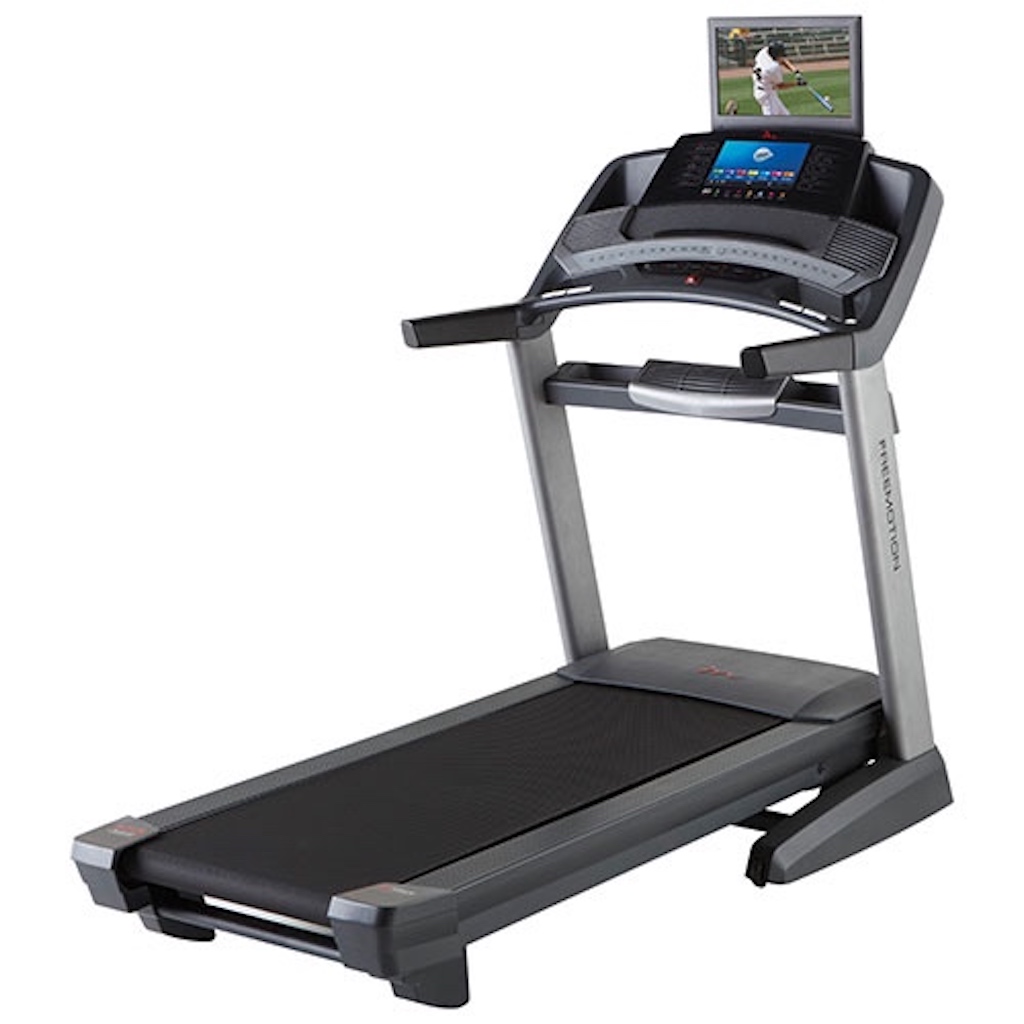
Belt and deck: When choosing a treadmill, it’s important to ensure that the length of the belt is at least adequate to contain your longest stride. Anything less and you’ll be running right off the machine. Likewise, belt width is also important. At the minimum, look for a belt width of at least 14 inches, but wider is even better when it comes to comfort while running. If your treadmill doesn’t fit your body size and stride length, you’re much less likely to use it.
Impact absorption: When walking or running on a treadmill, some of the force of the impact is absorbed into the deck so that there are less wear and tear on your knees and ankles. Some treadmills have the cushioning under their belt, while others actually have the cushioning inside the belt. What’s important to know is that not all treadmills are created equal, and therefore the quality of impact absorption will vary by model. This will be more important to some users than others.
Heart rate monitors: If you’d like a treadmill with a built-in heart rate monitor, a variety of models may suffice. What’s important to know, however, is that there are different kinds of monitors with varying rates of accuracy. Models using chest straps are generally the most accurate, but thumb pulse sensors could provide a break on price. Unfortunately, this may come at a loss of some precision, which could be important as operating within one’s specific heart rate target range helps to maximize the effects of the workout.
HD touchscreen display: Finally, many treadmills today have HD touch screen displays to help you with your workout. These displays offer a number of great benefits. For instance, on iFit enabled models you’ll be able to follow a special iFit coach trainer for one-on-one training help with your workout.
Elliptical Machines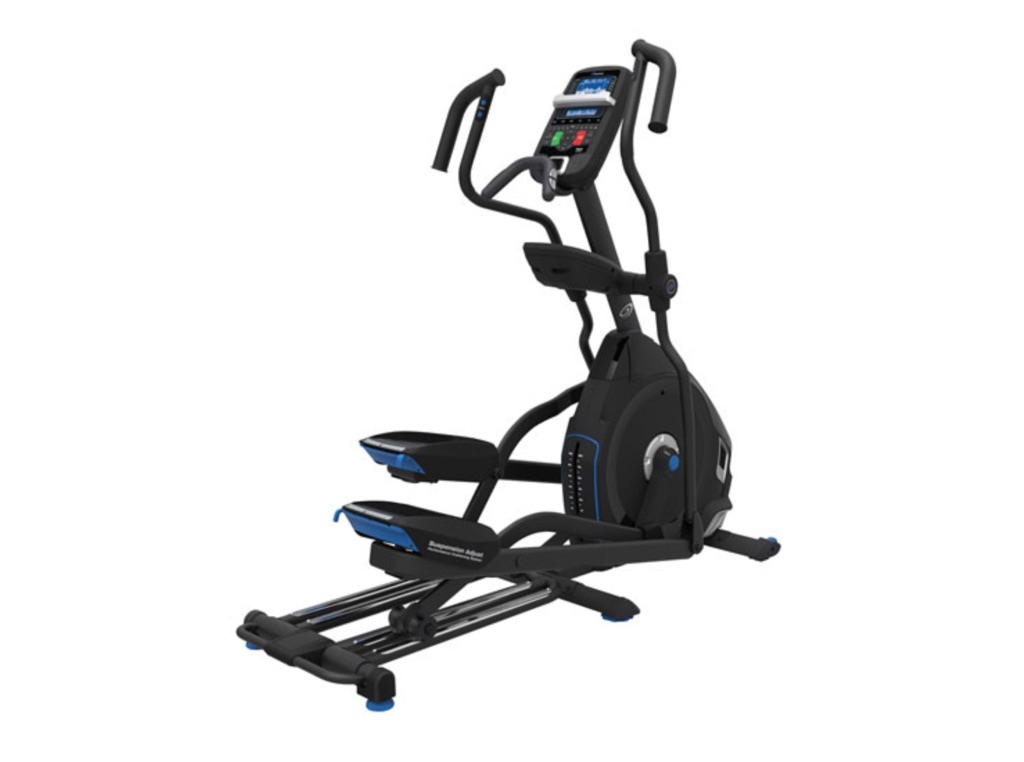
Elliptical Machines are prized for their ability to provide a low impact (with respect to the joints) yet highly effective cardio (and upper-body) workout to the user. Their low impact is due to the elliptical motion of the legs when taking each step (there are also elliptical cross-trainers as well as the standard elliptical trainers). Thus, ellipticals mimic the movement of walking or running (so you can go at your own pace), but without the shock on the feet and legs that comes from the halting impact of each individual step. Find out more on elliptical machines in our elliptical machines buying guide. Prospective buyers should always consider the following factors when shopping for an elliptical:
Resistance: Whether moving forward or backwards, a quality elliptical should offer a smooth yet firm motion. It’s important to realize, however, that the mechanism of resistance may feature either a manual or automatic adjustment. This allows users to increase or decrease the intensity of their workout. The weight and placement of the elliptical’s flywheel is the major factor influencing the smoothness and resistance level of the option chosen. Generally, an automatic adjustment is preferred as it’s quicker and easier to use and may be done on the fly while working out.
Stride and pedal size: The ideal stride length on a quality elliptical machine is at minimum 17 inches, though taller users may find 17 inches inadequate and want an even longer stride. Having adequate stride length provides a comfortable range of motion that should neither strain nor over-extend one’s joints and leg muscles. It’s also useful for ellipticals to feature oversized pedals that offer enough foot room for any sized user. This way one’s entire foot may be comfortably accommodated.

Incline: As with treadmills, the rate of incline is very important for ellipticals. Pertaining to the incline ramps, the range may be manually or electronically set. This will vary by elliptical model, and electronic adjustments are generally more complete in their range (a manual adjust model may only offer 2 or 3 incline settings). Because electronic adjustments may be changed on the fly (right in the middle of your workout), and due to their greater incline range, an electronic adjustment is a preferred method.
Control panels: Standard on most ellipticals are display panels with feedback pertaining to the user’s walking/running speed, time spent on the machine, and a very reasonable estimate of one’s total distance travelled. The very best of these machines may also include details such as the user’s pulse rate, total calories burned, and the present rate of incline. Many machines even offer preset workout programs along with a whole host of other high-tech features. Some consoles, for instance, are fully programmable or offer the ability to implement and run Internet-based workout programs. However, Such features do influence elliptical prices, so it’s important to know not just what you want, but also what you’ll need and use regularly. It’s advisable to only purchase an elliptical with the specific features you require, otherwise, you’ll overpay for a machine that does more than you need it to do.
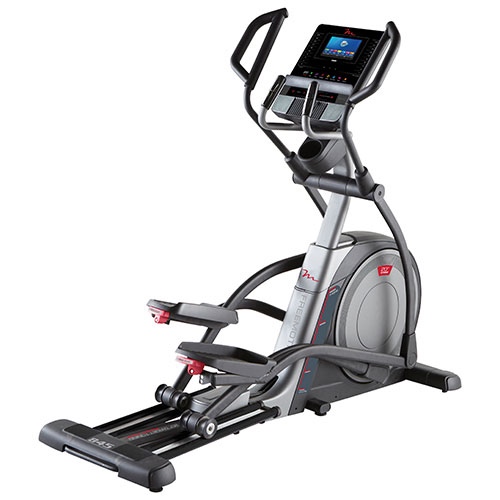
Upper-body workout: Most (but not all) ellipticals also offer an upper-body workout. If whole-body workouts are important to you, be sure to select a machine with the necessary arms to provide the desired routines. Such a machine may cost you a bit more, but your workouts on it will be much more complete.
Grip pulse sensors: Keeping within one’s specific target heart rate range is key to an effective workout. Finding an elliptical with grip pulse sensors allows for quick heart rate monitoring and on the fly adjustments of one’s workout activities to stay within the target range. This will maximize the effects of the workout and help users to achieve their peak fitness levels.
HD touchscreen display: As with treadmills, many top ellipticals today have HD touch screen displays. If you choose an iFit enabled model, you’ll also enjoy the benefits of a special iFit coach trainer to help you with one-on-one workout training (among many other benefits, such as the useful, real-time information that is displayed on the screen).
Stationary Bikes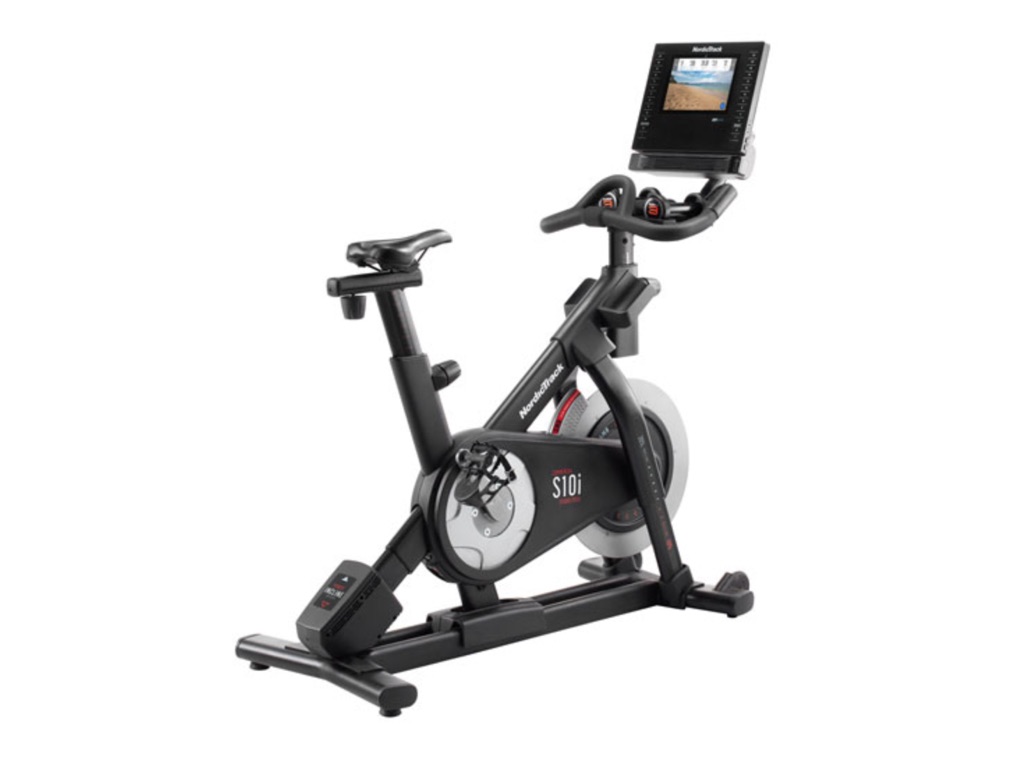
Another popular category of fitness equipment is the Stationary Exercise Bike. These machines allow users to ride, ride, ride their way to optimal fitness without ever leaving the house. There are both standard and spin stationary bikes. While the standard models are excellent, spin bikes more effectively mimic outdoor bicycles (i.e., they offer enhanced variable resistance for a full-body workout of several major muscle groups, such as the calves, thighs, hips, abs, and shoulders). Spin bikes are also great for interval training as they allow you to combine high and low intensity workouts into one, which is ideal for improving your metabolism. Learn more about the different types of statinary bikes in our exercise bike buying guide. Below is a selection of must-have stationary and spin bike features and qualities:
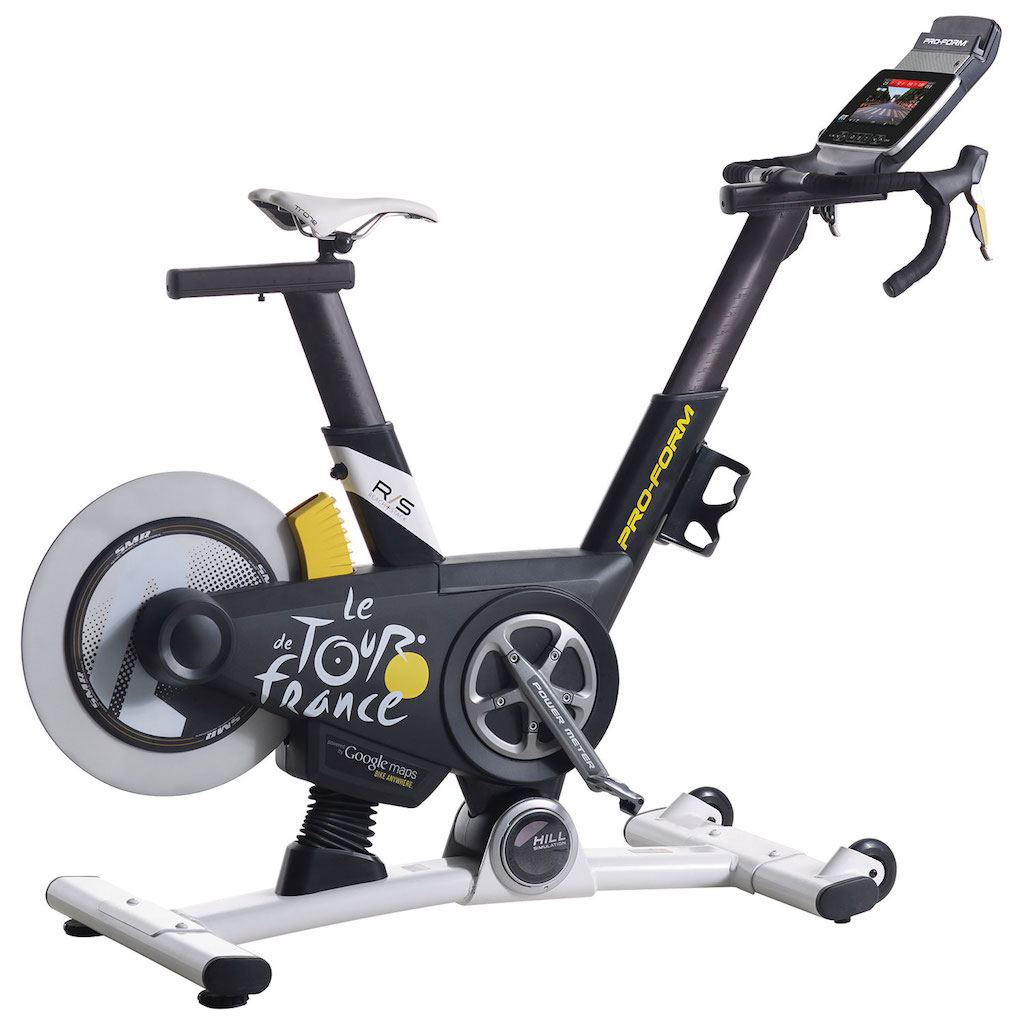
Seating: Modern stationary bikes have evolved to encompass two distinct design styles. There’s the classic upright bike that we’re all familiar with, and more recently has appeared the modern recumbent style, which many users find to be much easier to get on and off of. While the seating on an upright stationary bike is very similar to that of a traditional bicycle, the recumbent style of stationary provides extra back support due to the laid-back riding posture of the user. This is an important consideration for older users and those recovering from injuries or with joint and mobility issues. The style of stationary bike you choose will almost entirely come down to your own personal preference, so don’t get too hung up on this part of the decision when choosing your bike.
Resistance: As with most workout devices, the quality and type of resistance provided by stationary bikes vary by model, with the weight of the flywheel being the biggest factor influencing the smoothness and resistance levels of the bike. Although most stationary bikes offer adjustable magnetic resistance, higher-end models generally have an electronic adjustment system, whereas more basic models tend to offer only manual adjustment. Whatever the case, adjustable magnetic resistance makes for a smoother ride with less wear and tear on the bike. On electronic resistance models, the adjustment is made at the touch of a button so you can change the resistance as much as you like during your ride. This is obviously a very convenient option so you may want to keep an eye out for this feature.
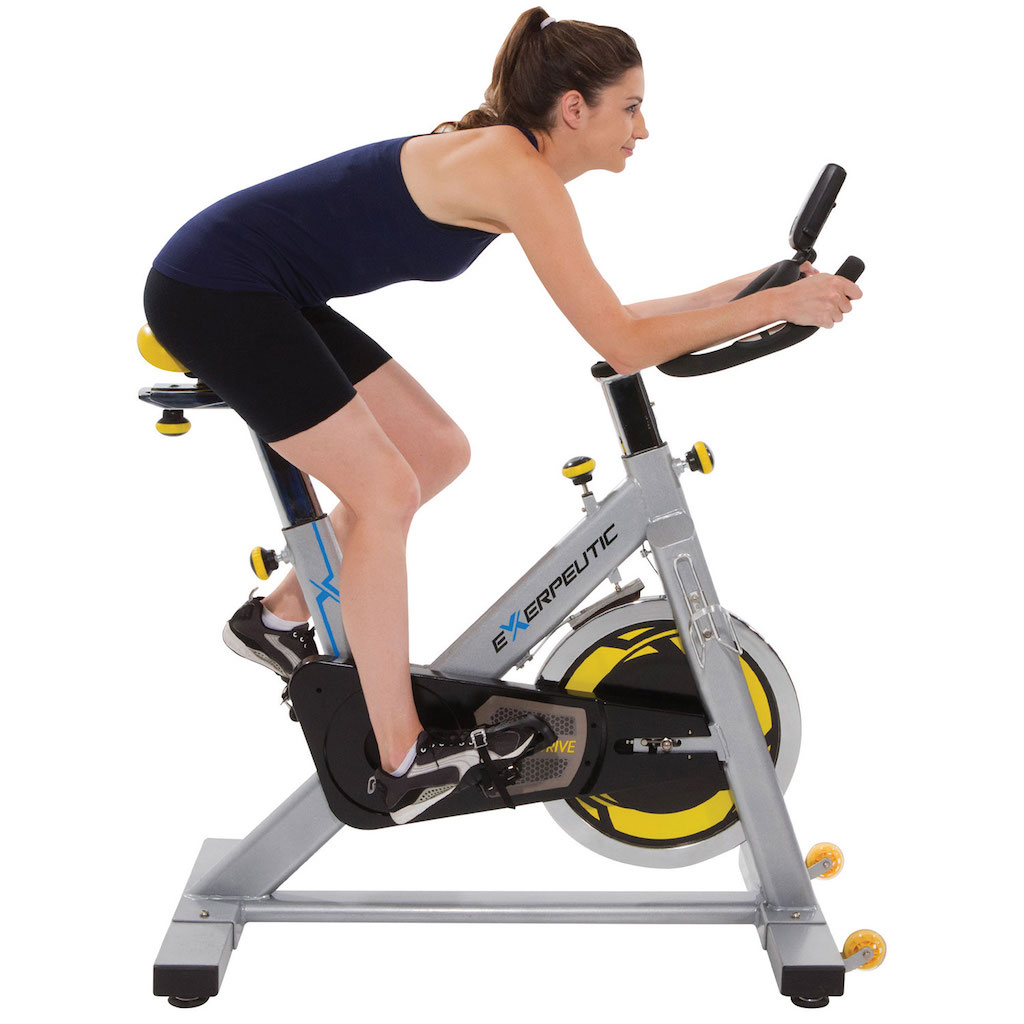
Control panels: This is another area where stationary bikes compare very well to other fitness equipment. At its most basic level, the control panel on a given bike is likely to provide information like speed, distance, and time, with some models also showing details such as pulse, scan, and calories burned. Of course, the range of features available in control panels is fairly wide so higher-end models may have such conveniences as preset riding programs or even fully programmable consoles. Again, it’s important to consider your needs carefully before making your purchase so as to avoid spending extra for a whole lot of features you’ll ultimately have no interest in using.
Heart rate monitors: The options available here are once again similar to what we’ve seen before. Grip pulse sensors, which are both convenient and easy to use, do seem to be a popular option on many stationary bikes. The accuracy of this method is very reasonable, though other systems are also available. It’s completely up to you which method you prefer, but it’s definitely good to have some form of heart rate monitoring so you can try to achieve and maintain an optimal heart rate level throughout your workout.
HD touchscreen display: As with the other types of machines discussed above, stationary bikes too may be equipped with HD touch screen displays. If your chosen model is iFit enabled, you’ll have the special iFit coach trainer for one-on-one training (and all of the other benefits of an information rich display).
Rowers
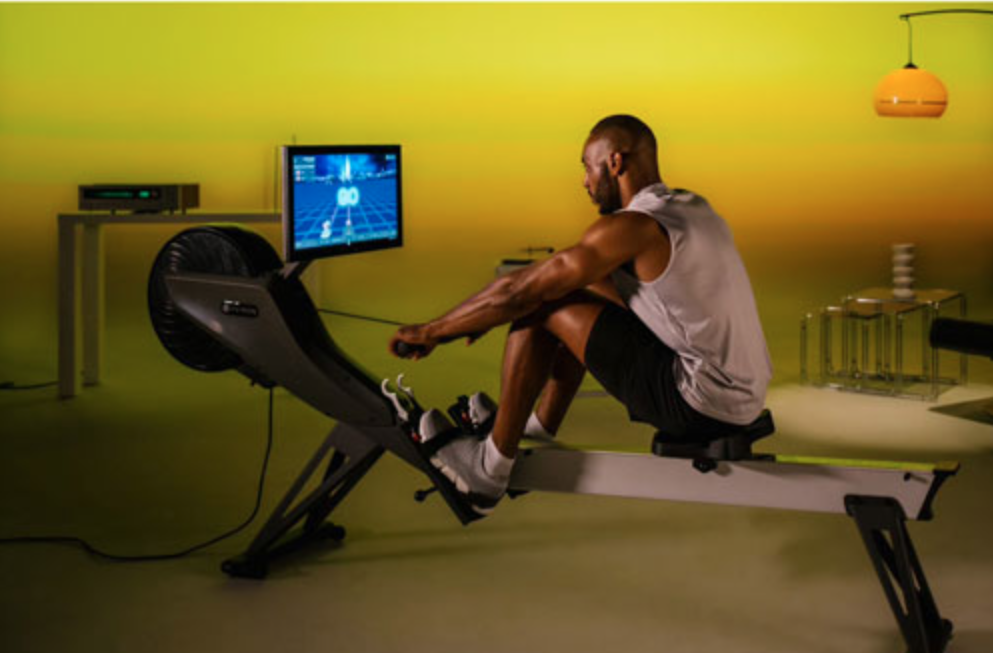
Rowers, always known as rowing machines, are another good option to consider when it comes to fitness equipment. They simulate the act of watercraft rowing, except allowing you to do this indoors. The purpose is to help you build both muscle and endurance. They sit low to the ground with a track and flywheel. Sit on a seat and place your feet on the footrests, then move back and forth in a rowing motion as the chain or strap that connects the two glides with you. Push with your legs first, lean back, and use your abdominal muscles and arms to keep the momentum going. There are four main types: air rowing machine that uses an opposing force to provide resistance through an internal, spinning flywheel; water rowing machine that has a tank you fill with actual water to provide the resistance; magnetic rowing machines that are compact, quiet, and use two strong magnets with the flywheel; and hydraulic rowing machines that use pistons for the resistance. Learn more about each as well as the many benefits of rowing machines in our in-depth rowing machines buying guide. They target various muscles, providing a full-body workout. Use a connected app or built-in screen to see how long it takes per row, total distance traveled, calories burned, pacing, and more. Here’s what you should look for in a rowing machine:
Resistance: They come with different resistance levels, with anywhere from eight up to as many as 26, so make sure to find one that meets your needs. For progressive exercising, you might want more resistance levels so you can increase difficulty as you improve and build up strength and endurance. Some make it easy to adjust resistance right from the handlebars, which is useful if you want to do a workout that starts simple, builds, then goes into a cool-down mode.
Comfort: Make sure the seat is comfortable, especially if you’ll be sitting for 20-30 minutes at a time, or longer. Some come with padding. The footrests should also be comfortable and offer good traction so your feet don’t slip. Adjustable footstraps are even better to keep them in place. For the handles, some have foam to ensure a comfortable and secure grip.
Sound: Rowing machines can be loud, especially hydraulic ones, so if sound travels in your home and you plan to work out in the wee hours of the morning, late at night, or have others in the home you don’t want to distract (or maybe you want to listen to music, watch TV, or follow a virtual workout while you row), you’ll want one that’s ultra-quiet. Magnetic rowing machines tend to be quiet thanks to the Silent Magnetic Resistance (SMR), while water rowers are whisper-quiet, too.
HD touch-screen display: Some rowers come with a built-in display or have a mount where you can place your smartphone or tablet to follow a virtual on-screen workout or play video to get you motivated or help pass the time. Built-in displays will usually show stats, like number of reps and calories burned, while some even track heart rate in real-time to help you maximize the workout.
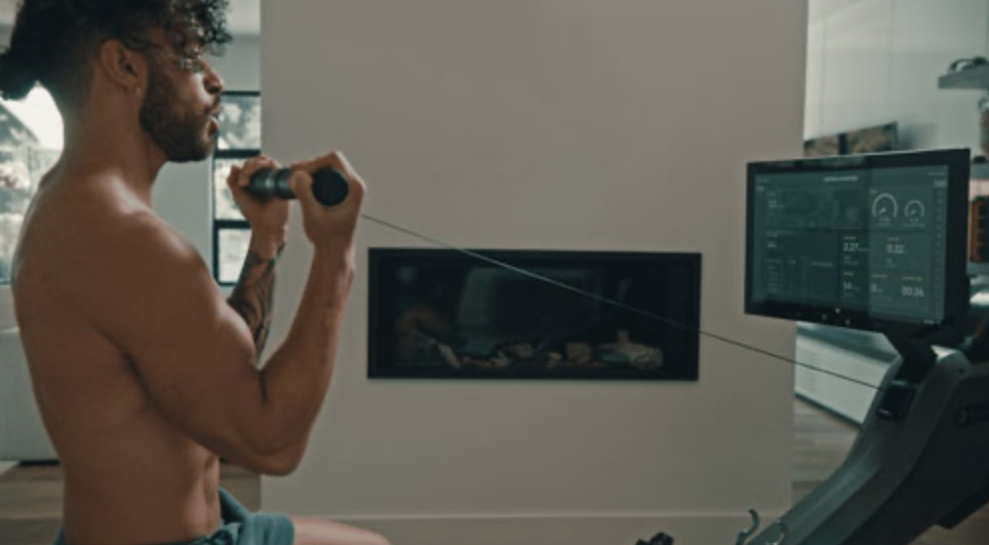
Other functions: Some rowers can be used for other types of workouts as well, like strength training, cardio, barre, physical therapy, and pilates. This will involve adjusting the straps or adding other ones to do standing exercises. If you want to get the most out of the machine, you might want to consider one of these.
Smart and connected features: The latest, most premium rowers, have smart connected features. This might include something as simple as being able to connect a mobile device to listen to music through built-in speakers. With smart rowers, you can sync the machine with a streaming workout in an app to follow along on the built-in screen or your mounted tablet. Some come with free trials to apps with live and on-demand classes, which can be a great way to motivate you right out of the box.
Home Gyms
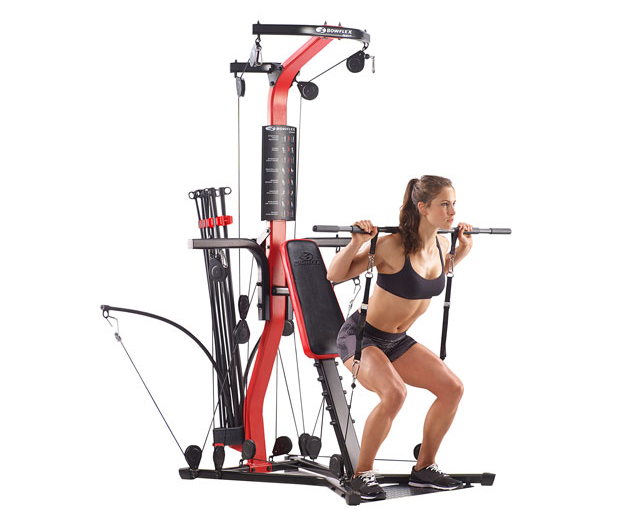
Many people mistakenly assume that strength training is primarily for bodybuilders and professional wrestlers. This isn’t true. Strength training can be beneficial to anyone that’s taking an interest in their personal health and fitness. For instance, adding muscle mass increases our resting metabolism, helping us to burn off calories more effectively. It also increases our bone density, helping to counteract bone loss as we age. This includes both men and women, and it can help with burning fat, increasing muscle mass, and getting into overall better condition. Here are a few of the key considerations you should explore when considering adding a home gym to your home:
Number of Stations: Consider the amount of space you have available for workout stations in your exercise room. Most home gyms can accommodate between 1 and 3 users. This means that if you work out with a partner (which is highly advisable for weight training), having 2 (or even 3) stations is not unheard of, provided you have the room. For instance, if your home gym has dual weight stacks, both users can work out simultaneously. However, if either user is tackling the truly heavy weights, spotting is important! For easier to handle weights, working out at the exact same time could really speed things up.
Number of Exercises: Home gyms typically advertise the total number of exercises that are possible to perform on the machine. This means that choosing a machine with a good number of exercises allows for greater variety in one’s overall workout routines. Additionally, getting multiple stations could create some overlap between types of exercises available, but if the stations are somewhat different, it will also add to the overall variety of workouts you can complete in your home gym.
Total Resistance: Most home gyms typically state the actual total weight of the stack included with the station, as well as the total resistance provided to users by the stack. Total resistance is the number that prospective buyers should be most concerned with. For instance, a 100-pound stack can provide as much as 150 pounds of total resistance. It’s important to understand this concept as this is what you’ll be utilizing during your workout.
Fitness equipment is the first step
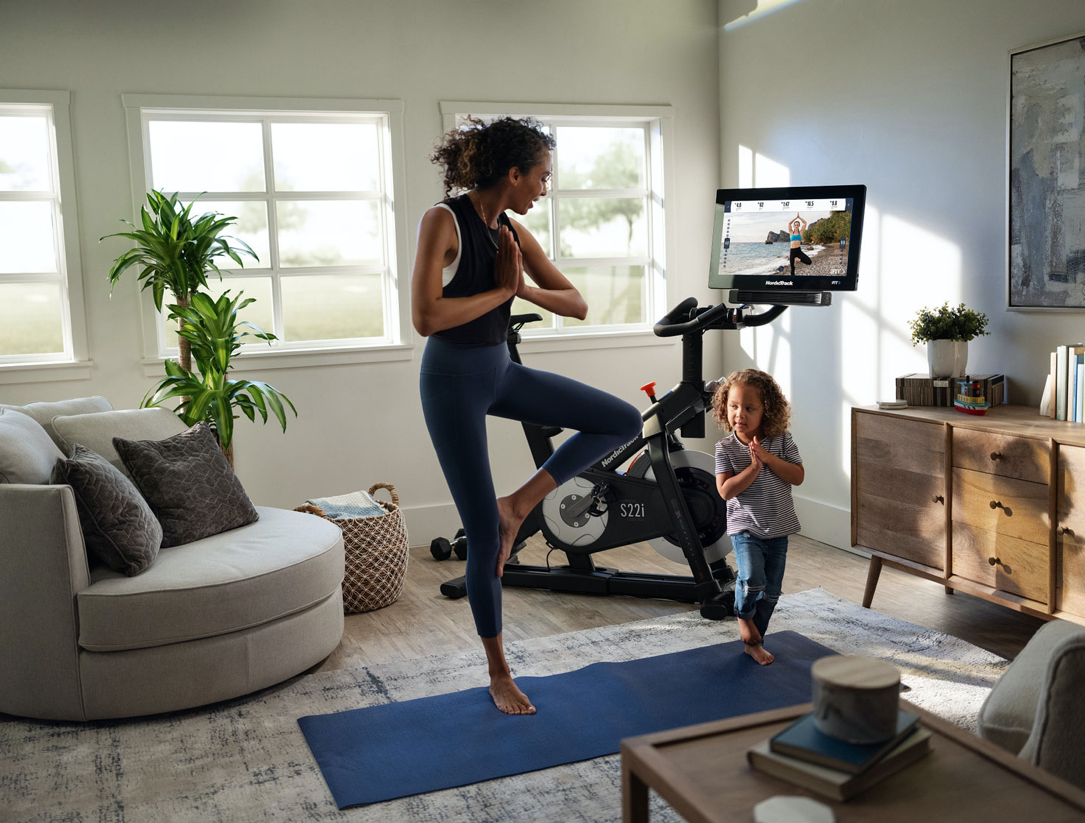
Getting a major piece of fitness equipment for the home is the first step in working towards a healthier lifestyle. One you commit to buying something, select the right piece of equipment for you, and set it up, all that’s left is the motivation. Try determining what classes you’ll follow each day to help encourage you to get started without feeling lost. This is why machines that come with trial subscriptions are great for beginners, giving you the chance to try out different types of workouts at different levels to find what suits your lifestyle and fitness level. Or, simply commit to something specific: 20 minutes a day to start at a low intensity, then work your way up. Set a goal to be able to go for longer after three months, for example, or to increase intensity every week to progress slowly. Once you get started and it becomes part of your routine, you’ll find that fitness equipment has been one of the best investments you’ve made this year.
Take the next step
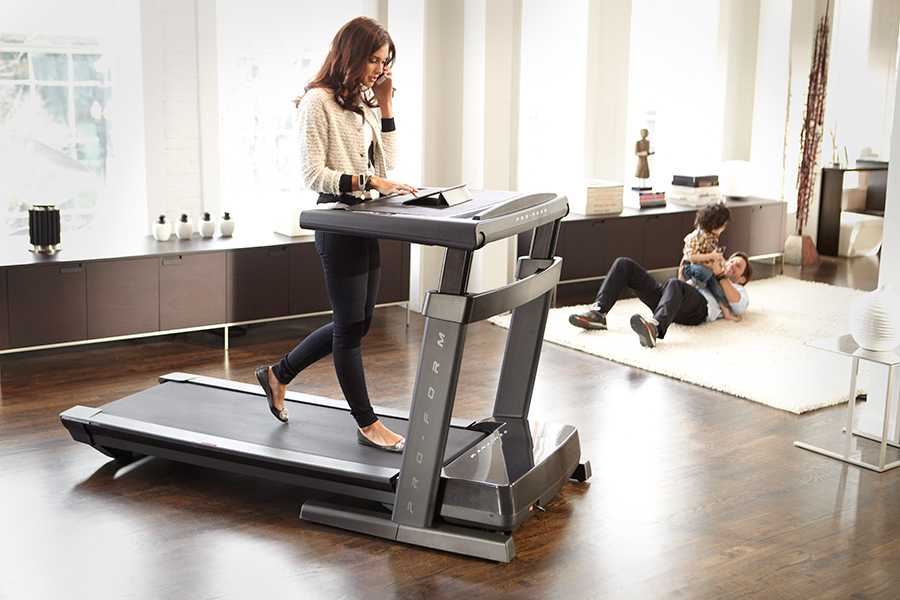
The new fit and healthier you is closer than you think. Order online from Best Buy and soon you’ll be working your way to a healthy new body. You’ll find all the equipment you need.








